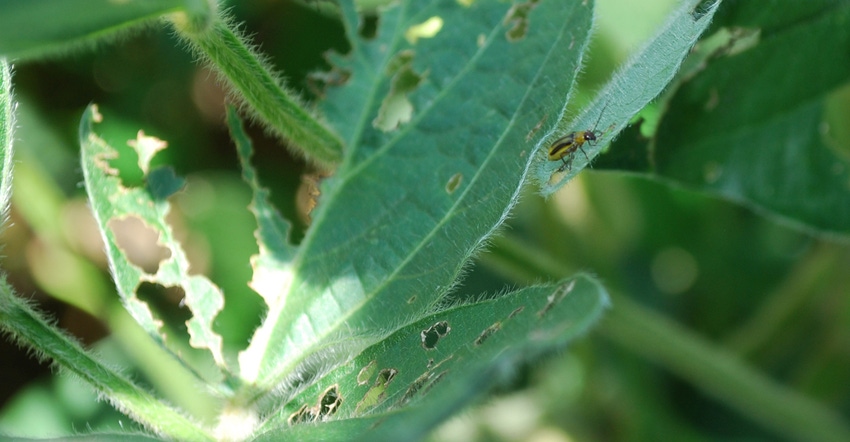
Where have all the rootworms gone?
The intense spring rains during the past few years have kept western corn rootworm populations from rebuilding, explains Joe Spencer, University of Illinois entomologist. If western corn rootworm populations are historically low, do you need to plant Bt hybrids in 2018?
That’s a loaded question that’s next to impossible to answer, Spencer says. Why? Low regional western corn rootworm counts may not indicate field-level pressure, which can only be determined by in-season scouting, he explains.
But seed selection happens now. Not sure about your next steps? Spencer offers a few western corn rootworm and Bt factors to consider:
1. Mind the maps. Kelly Estes, University of Illinois entomologist, tracks western corn rootworm pressure each year (see charts below). Populations across the state have declined since 2011, but there are areas like central Illinois with higher counts.
“There’s no cause for an alarm, but this could be a rebuilding year,” Spencer notes.
#rootworm numbers slightly increasing in 2017. More details on the statewide corn & soybean survey this week from @ILPestBulletin pic.twitter.com/3MZGXGGHtG
— Kelly Estes (@ILPestSurvey) August 22, 2017
2. Know your fields. It comes down to scouting your fields, Spencer says. Did you find western corn rootworm beetles in your fields this summer? “If farmers haven’t looked in the field, it’s a challenge to make an informed decision,” he explains. If you don’t have scouting reports, use the regional population reports as a guide and make a note to scout for western corn rootworm beetles in 2018.
3. Reduce Bt exposure, if you can. Farmers with little to no western corn rootworm pressure could plant non-Bt hybrids with a soil insecticide and help reduce the selection for resistance, Spencer notes. Think of it like antibiotics, he explains. Doctors won’t prescribe medicine unless you really need it because they don’t want to unnecessarily expose you and increase resistance challenges. “It’s the same sort of thinking with Bt corn,” he notes. “If you don’t have a rootworm population capable of causing economic injury, Bt won’t provide any yield benefit for you, and it’s still exposing the existing population to the trait and continuing to select for resistance.”
4. If you need a Bt hybrid, double down on traits. “A single-traited hybrid is a risky proposition,” Spencer says, and notes evidence of resistance developing to all Bt traits. “With a single trait, you don’t have backup from a second mode of action.” Make sure to plant pyramided Bt hybrids that express the Cry34/35Ab1 protein in addition to eCry3.1Ab, Cry3Bb1 or mCry3A proteins, which are functionally the same protein. Your seed sales representative can help you identify an appropriate Bt trait package.
5. Keep the pyramided hybrid; hold the soil insecticide. Not only does using a soil insecticide with a pyramided hybrid add unnecessary costs, but it also could worsen resistance issues by impacting when Bt-susceptible and Bt-resistant adult beetles emerge and mate. Soil insecticide and Bt traits delay the emergence of adults, Spencer explains. Further delaying western corn rootworm beetle emergence with a soil insecticide makes it harder for the right insects to mate.
6. Figure out the bang for your buck. If you go with a Bt hybrid, plant a small check strip so you can see how Bt hybrid efficacy compares to hybrids without corn rootworm protection.
About the Author(s)
You May Also Like




